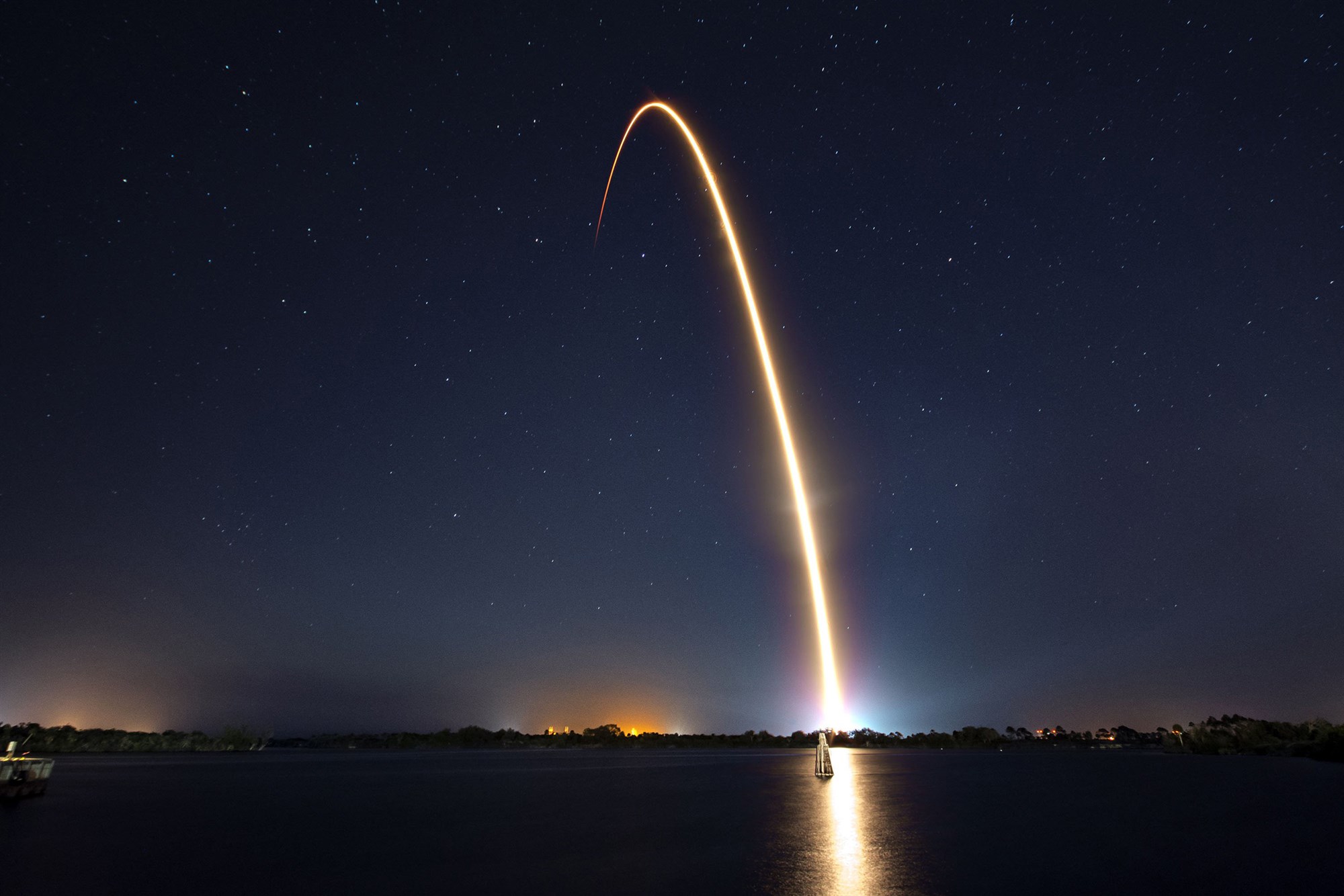A 30-million page library is heading to the moon to help preserve human civilization

A 30-million page library is heading to the moon to help preserve human civilization

A Falcon 9 rocket launches carrying Israel’s Beresheet spacecraft at Cape Canaveral Air Force Station on Feb. 21, 2019.SpaceX via AFP – Getty Images
When Israel’s Beresheet spacecraft launched toward the moon last week, it was carrying a mysterious cargo. Mission planners called it a time capsule but hinted that that wasn’t the whole story. Now the truth is out: The little lunar probe carries a 30-million-page archive of human knowledge etched into a DVD-size metal disc.
The Lunar Library, as the archive is known, constitutes a “civilization backup” to help ensure that our distant descendants never lose humanity’s collective wisdom, according to Nova Spivack, co-founder of Arch Mission Foundation, the Los Angeles-based nonprofit behind the project. The foundation is building a space-based archive designed to survive for 6 billion years or more — a million times longer than the oldest written records in existence today.
“One of the primary evolutionary challenges that we face is amnesia about our past mistakes, and the lack of active countermeasures to repeating them,” Spivack said in an email. “For the survival of our species, we need to find ways to raise our awareness of what worked and didn’t work, and we need to ensure it is shared with the people of the future.”
Paul Davies, director of the Beyond Center for Fundamental Concepts in Physics at Arizona State University, regards the Lunar Library as mostly symbolic, yet still important. “It encourages people to reflect on humankind’s place in the universe,” he said, and to rethink how we search for evidence of nonhuman civilizations, too.
“If we can leave records on the moon for a huge duration, maybe E.T. will have done the same,” Davies said, adding that it might make sense for humans to look for alien artifacts on the moon or other locations.
THE WORLD IN A DISC
Sending a library into space isn’t entirely new for the Arch Foundation. Before Elon Musk launched a Tesla Roadster into orbit around the sun last year, Spivack and his team put in its glove box a quartz disc containing the entire text of Asimov’s famous “Foundation” trilogy of science-fiction books, a major influence on Spivack’s thinking.
For the Lunar Library, the scope had to be far wider. “We are building a Rosetta Stone for beings who inhabit our solar system in the future,” Spivack said.
One small component of the archive is the time capsule Beresheet’s creators alluded to: a collection of songs, children’s drawings and writings about Israeli culture and history. But the rest is truly encyclopedic. Included in the Lunar Library’s more than 200 gigabytes of data are the entire English-language version of Wikipedia; tens of thousands of fiction and nonfiction books; a collection of textbooks; and a guide to 5,000 languages along with 1.5 billion sample translations between them.
All of that information is etched onto 25 stacked nickel disks, each just 40 microns (about 1/600th of an inch) thick.

Front cover of the 2019 Lunar Library.Bruce Ha / Arch Mission Foundation
Since people of the far future will presumably not have a DVD player handy, and might not speak any language now in use, the top of the Lunar Library’s disc is engraved with tiny images of books and other documents explaining human linguistics, along with instructions about how to read the library beneath. The introductory layers can easily be viewed when magnified 100 times under a simple microscope. Then it’s up to our crafty descendants to build the player so they can read the rest of the Library.
BUILT TO LAST (ALMOST) FOREVER
All of that content will mean nothing if the physical object doesn’t survive, so the Arch Foundation helped develop a super-durable data-recording technology called Nanofiche for the Lunar Library disc. “It can withstand sustained heat that is 10 times greater than what is experienced on the moon with no damage to the data,” Spivack said of the disc, which is made of nickel because of its extreme durability and modest cost.
The Lunar Library is shielded by a protective layer and insulation, as well as the structure of the Beresheet lander itself. All of that should help safeguard it from micrometeorites that strike the moon on a regular basis. Even so, it may not have anything like the 6-billion-year lifetime that Spivack is targeting. “These objects will not survive for a billion years un-degraded, but they might be intact and unburied after 10 million years, maybe 50 million years,” Davies said.


